League of Legends: Wild Rift is among the hottest MOBA games right now. You can play it with your friends casually, but if you’re looking to bring your A game and show off your skills, then you’ll thrive in ranked matches. But to be able to climb up the Wild Rift ranks fast and reach Challenger, there are a few things you need to understand first. Luckily, we’re here to help. In this guide, we will tell you everything you need to know about how you get promoted in LoL Wild Rift, from the different ranks to the rewards you get after each season.
Also read: Wild Rift Tier List: The Best Champions to Pick for Your Matches
Inside This Article
- What Does Ranking Mean in League of Legends Wild Rift?
- What Are the Wild Rift Ranks?
- When Can You Start Ranking in Wild Rift?
- How Does Wild Rift Rank Promotion Work?
- What Is Ranked Fortitude in Wild Rift?
- Can You Get Demoted in Wild Rift?
- How Does Wild Rift Punish AFKs in Ranked Matches?
- What Happens After a Ranked Season in Wild Rift?
- What Happens When You Reach the Highest Rank in League of Legends?
What Does Ranking Mean in League of Legends: Wild Rift?
Like a lot of other video games, League of Legends: Wild Rift also has ranks. In the ranking system, the game matches you with players that are of a similar skill level as you, and you get to either team up with them or fight against them during ranked matches. There are currently ten Wild Rift ranks in total, and we’ll tell you all about them in the next section.
What Are the Wild Rift Ranks?
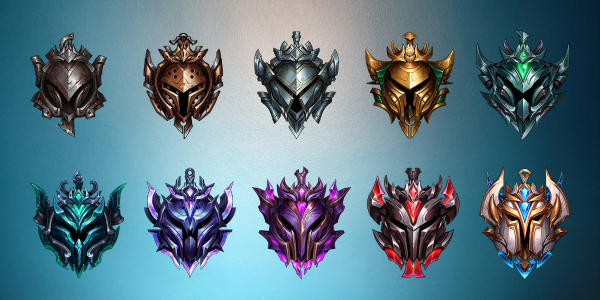
The Wild Rift ranks are as follows, with Tier 1 being the lowest:
| Tier | Rank |
| 1 | Iron |
| 2 | Bronze |
| 3 | Silver |
| 4 | Gold |
| 5 | Platinum |
| 6 | Emerald |
| 7 | Diamond |
| 8 | Master |
| 9 | Grandmaster |
| 10 | Challenger |
The Iron, Bronze, Silver, Gold, Platinum, Emerald, and Diamond ranks are further split up into four divisions. For each of these Wild Rift ranks, you’ll first need to conquer Division IV and then move your way up to Division I before you can progress to the next rank. The ranks starting from Master don’t have divisions. Climbing these higher ranks depend on the number of players currently occupying them as well as your Ranked Marks.
When Can You Start Ranking in Wild Rift?

You can start climbing the Wild Rift ranks once you’ve hit Level 10. You’ll then be able to undergo a provisional period, which comprises ten placement matches. After your first placement match, you will get a provisional rank depending on how that game went. The more placement matches you win, the more Ranked Marks you get, and the higher your starting rank will be.
The great thing about this provisional period is that you won’t lose Ranked Marks when you lose a match, unlike in actual ranked matches. Plus, your provisional rank is private only to you. After you’ve completed all ten placement matches, the accumulated result of all of those will determine the rank you’ll start at in LoL Wild Rift.
How Does Wild Rift Rank Promotion Work?
Once you’ve completed the provisional period, you can then start progressing from your starting rank to the higher Wild Rift ranks. Doing so is simple; you only need to win a single game to move on to the next division and, eventually, to the next rank.
In earlier seasons, you needed to undergo a promotion series to be able to jump from one rank to another instead of having to go through divisions. However, the developers figured that this system wasn’t improving the game’s spirit of competition as they intended; it only veered players away from ranked matches. As such, they decided to scrap the promotion series altogether starting in Season 3.
As of writing, your progression through the Wild Rift ranks are determined by two rating systems: Ranked Marks and Matchmaking Rating (or MMR). LoL Wild Rift used to award Victory Points instead of Ranked Marks to players once they’ve reached the Diamond rank. However, in August 2022, it was announced that the game is removing this point system to make way for the all-new Legendary queue and to make the Ranked experience more seamless.
Ranked Marks

Ranked Marks are what you win (or lose) after every game. Winning a match gets you one Ranked Mark, but each defeat also means you lose one earned mark, except in the first two ranks (Iron and Bronze). Once you’ve earned enough Ranked Marks, you can then climb up the next division or tier. The number of Ranked Marks you need to get promoted increases as you go up each rank:
| Rank | Qualifying Ranked Marks Per Division |
| Iron | 2 |
| Bronze | 3 |
| Silver | 3 |
| Gold | 4 |
| Platinum | 4 |
| Emerald | 5 |
| Diamond | 6 |
However, since the Wild Rift ranks starting from Master through Challenger no longer have divisions, climbing up these higher ranks has slightly different requirements. Besides needing a certain number of Ranked Marks, you also need to be one of the top players on the server:
| Rank | Minimum Ranked Marks | Minimum Rank on the Server |
| Master | 1 | N/A |
| Grandmaster | 20 | Top 25,000 |
| Challenger | 40 | Top 3,000 |
Keep in mind that you will need to meet both requirements before you can go up a rank. For instance, even if you already earned more than 20 Ranked Marks, you’ll still remain in Master if you don’t place in the top 25,000 of the server.
MMR
Your Matchmaking Rating (or MMR) is a measure of your skills in Wild Rift. It’s the game’s way of predicting how you’ll play in the next match and your ability to win matches.
How the MMR is calculated seems to be a mystery to everyone except the game’s developers. However, what we do know is that your MMR rises per win and falls per loss. That said, how much your MMR goes up or down depends on a few factors, including how difficult the match was, whether it was an even match, and whether the outcome was expected.
If the expected winner (based on the MMR) actually wins the game, there won’t be much change in each player’s MMR. However, if the unexpected happens, each player’s MMR will move more to better reflect their actual skill level. As such, if you win against a player who was predicted to win, your MMR will go up depending on how much higher their MMR was compared to yours. The higher the gap between the two values, the more your MMR will increase, and the more theirs will decrease.
So, how does your MMR affect how you climb up the Wild Rift ranks? If you win against someone with a higher MMR, you’ll get a higher rank than predicted. The same goes for when you lose: you’ll be awarded a lower rank if you lose more than expected. Your MMR also determines who you’ll be up against in ranked matches. That means that even if you’re in Platinum III but have a significantly higher MMR than other players in your rank, the game can match you with players in higher ranks, as long as they have the same MMR as you.
What Is Ranked Fortitude in Wild Rift?
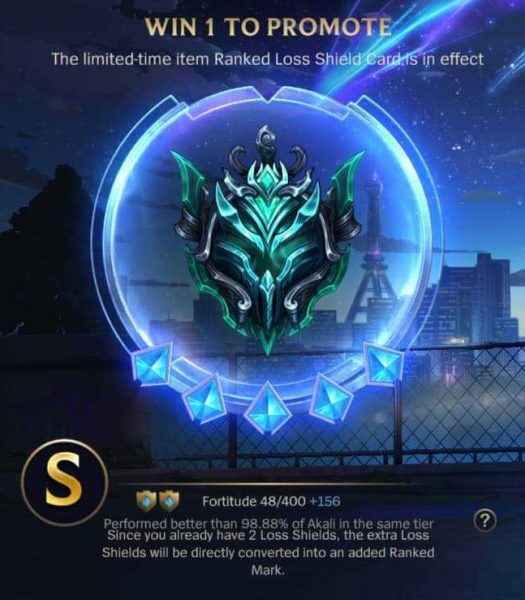
In League of Legends: Wild Rift, Ranked Fortitude is a reward for players who play a good, impactful game. You earn it every time you show positive behavior, like maintaining winning streaks or carrying on with matches despite having an AFK teammate. Likewise, you lose it when you show negative behavior, like leaving in the middle of a game.
You’ll be able to keep track of your Ranked Fortitude in the bar underneath your rank. The better and cleaner you play, the faster this bar gets filled. However, do note that there’s a maximum number of Fortitude Points you can earn depending on your rank:
| Rank | Max Fortitude Points |
| Iron | 50 |
| Bronze | 100 |
| Silver | 150 |
| Gold | 200 |
| Platinum | 300 |
| Emerald | 400 |
| Diamond | 500 |
| Master | 600 |
| Grandmaster | 600 |
| Challenger | 600 |
Each time the Fortitude bar becomes full, the game rewards you with a Ranked Loss Shield. This takes the place of a Ranked Mark whenever you lose a game. In effect, you’ll only lose a Ranked Loss Shield instead of your hard-earned Ranked Mark. However, keep in mind that you can only have up to two Ranked Loss Shields at a time. If you already have two Loss Shields and you fill the Ranked Fortitude bar once more, you’ll get a bonus Ranked Mark instead of a Loss Shield.
Can You Get Demoted in Wild Rift?
Just as you can climb up the Wild Rift ranks, you can also get demoted in the game. Keep in mind that, as well as earning Ranked Marks when you win matches, you can also lose a Ranked Mark for every defeat. If you lose too many Ranked Marks, you’ll go down a division. Eventually, if you run out of marks needed to stay in a rank, you’ll be demoted to a lower rank.
However, as we mentioned, losing matches while you’re still in the Iron or Bronze rank won’t result in a deduction of your Ranked Marks, so consider these matches as practice for when you move up. Also, you can use your Ranked Loss Shields from the Fortitude Points you earned to deter demotion.
How Does Wild Rift Punish AFKs in Ranked Matches?
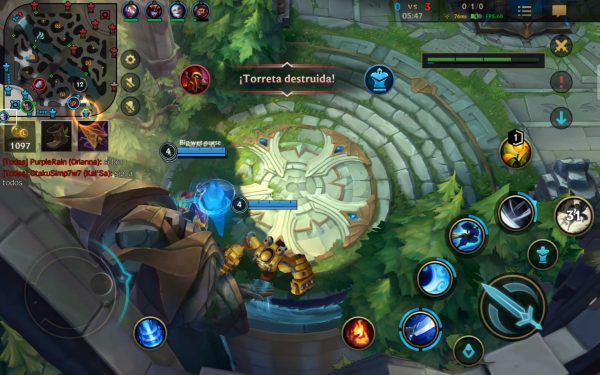
To keep players from quitting or going AFK (away from keyboard) in the middle of a ranked match, LoL Wild Rift has implemented a punishment system for deserters, which is as follows:
| Offense | Length of AFK | Queue Delay |
| First AFK | AFK for 3 to 6 minutes | 10 minutes |
| First AFK | AFK for more than 6 minutes | 20 minutes |
| Succeeding AFKs | Another AFK within 7 days | 6 hours |
In addition to these queue delays, you’ll also lose Ranked Fortitude if you’re in the Emerald rank or below. How much Ranked Fortitude you’ll lose will depend on your AFK duration while the ranked match was on. However, if you’re in Diamond or higher, you’ll lose Ranked Marks, again depending on how long you went AFK.
What Happens After a Ranked Season in Wild Rift?
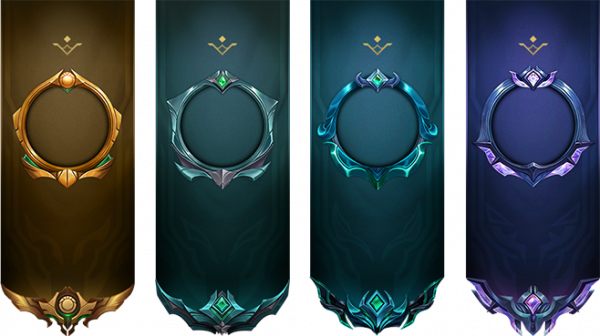
Each ranked season in LoL Wild Rift lasts around three months. At the end of each season, you’ll get rewards (if you’re eligible), and you can also expect some resets.
Let’s talk about rewards first. If you get to Gold (Rank 4) or higher and have at least ten ranked wins under your belt, you’ll get a player emblem that displays the highest rank you’ve reached during the season. However, if you don’t reach Gold, you’ll at least get a participation icon that you can show off to other players.
The end of each season also comes with a couple of resets. First, you’ll start in a new, slightly lower rank when you get to the next season, except if you ended the season in one of the three lower Wild Rift ranks. Here’s a table for reference:
| Final Rank | Starting Rank in the Next Season |
| Iron, Bronze, or Silver (any division) | No Change |
| Gold IV | Gold IV |
| Gold III | Gold IV |
| Gold II | Gold III |
| Gold I | Gold III |
| Platinum IV | Gold II |
| Platinum III | Gold III |
| Platinum II | Gold I |
| Platinum I | Gold I |
| Emerald IV | Platinum IV |
| Emerald III | Platinum IV |
| Emerald II | Platinum III |
| Emerald I | Platinum III |
| Diamond IV | Platinum II |
| Diamond III | Platinum I |
| Diamond II | Emerald IV |
| Diamond I | Emerald III |
| Master | Emerald II |
| Grandmaster | Emerald I |
| Challenger | Diamond IV |
On top of that, your Ranked Fortitude goes back to zero once the current season is done, which means you’ll have to build it up again when the new season comes in. Any unused Ranked Loss Shields also won’t carry over to the next season, so be sure to use them while you still can.
What Happens When You Reach the Highest Rank in League of Legends: Wild Rift?
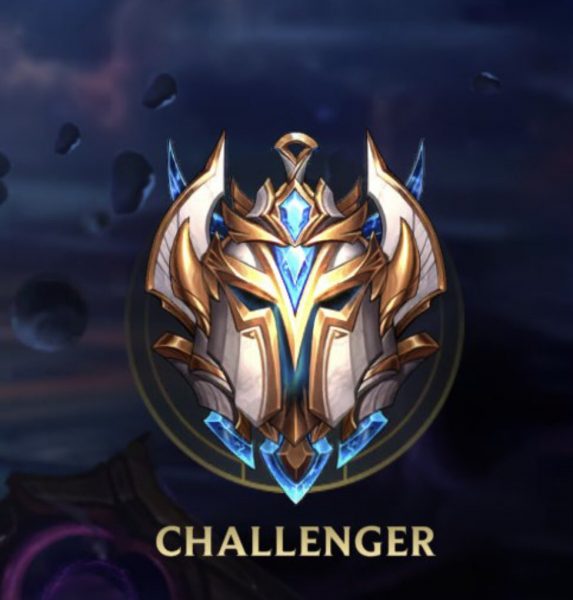
Once you’ve reached Challenger, the highest rank in Wild Rift, then congrats! Do keep in mind, though, that those who get to Challenger are the very best of the best, so the grind never really stops until the ranked season ends. Remember that there’s a possibility of demotion regardless of which rank you’re in. As such, you’ll need to keep fighting in order to prove that you belong in Challenger and reap better rewards at the end of the season.
Final Thoughts
Climbing up the Wild Rift ranks is surely a challenge. You’ll of course need to perform well during ranked matches, but you’ll also need to play honorably and with impact; that’s how you ensure that you’re stacking up not just on Ranked Marks and MMR but on Ranked Fortitude as well. That way, you won’t get demoted easily even after some losses.
